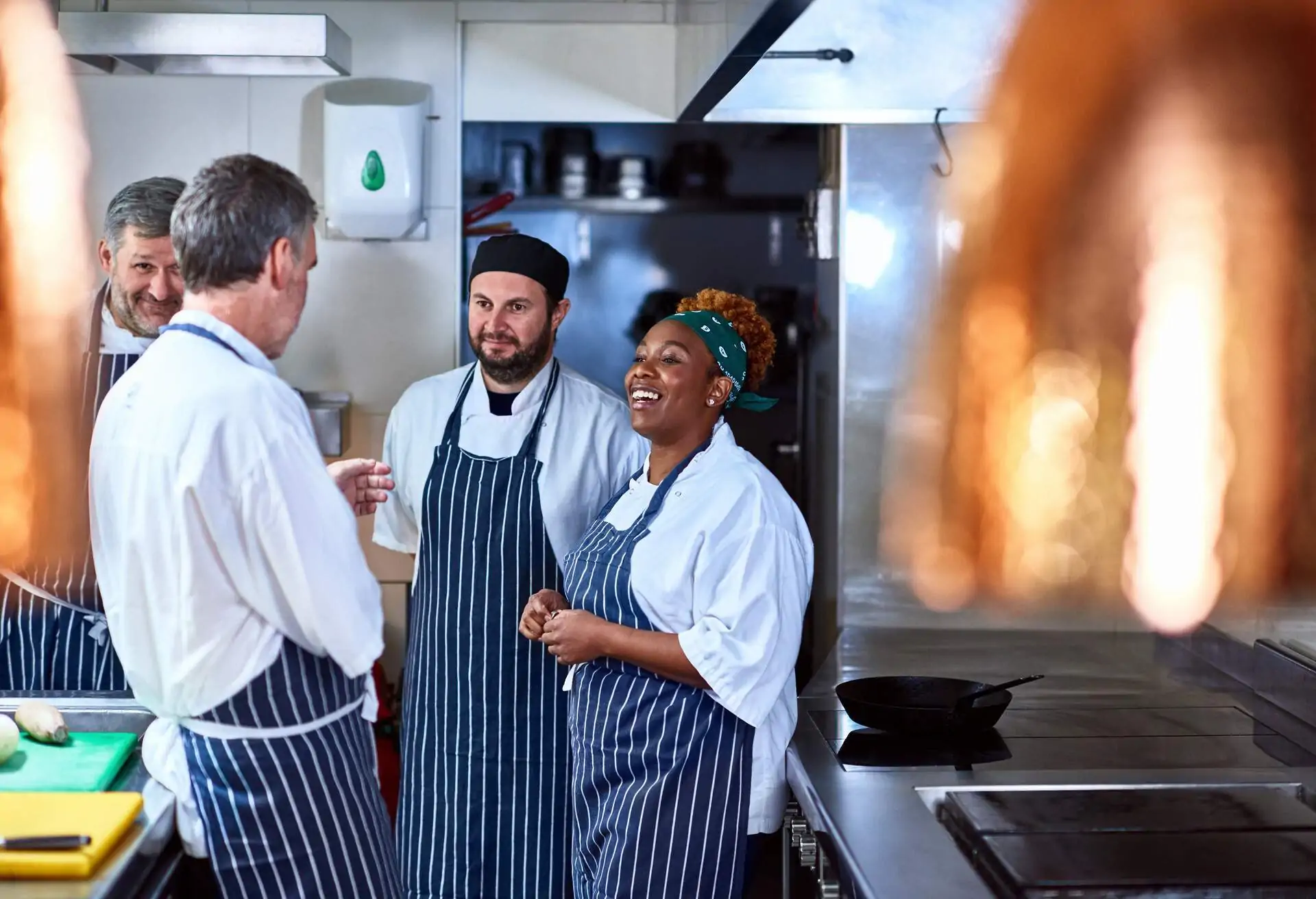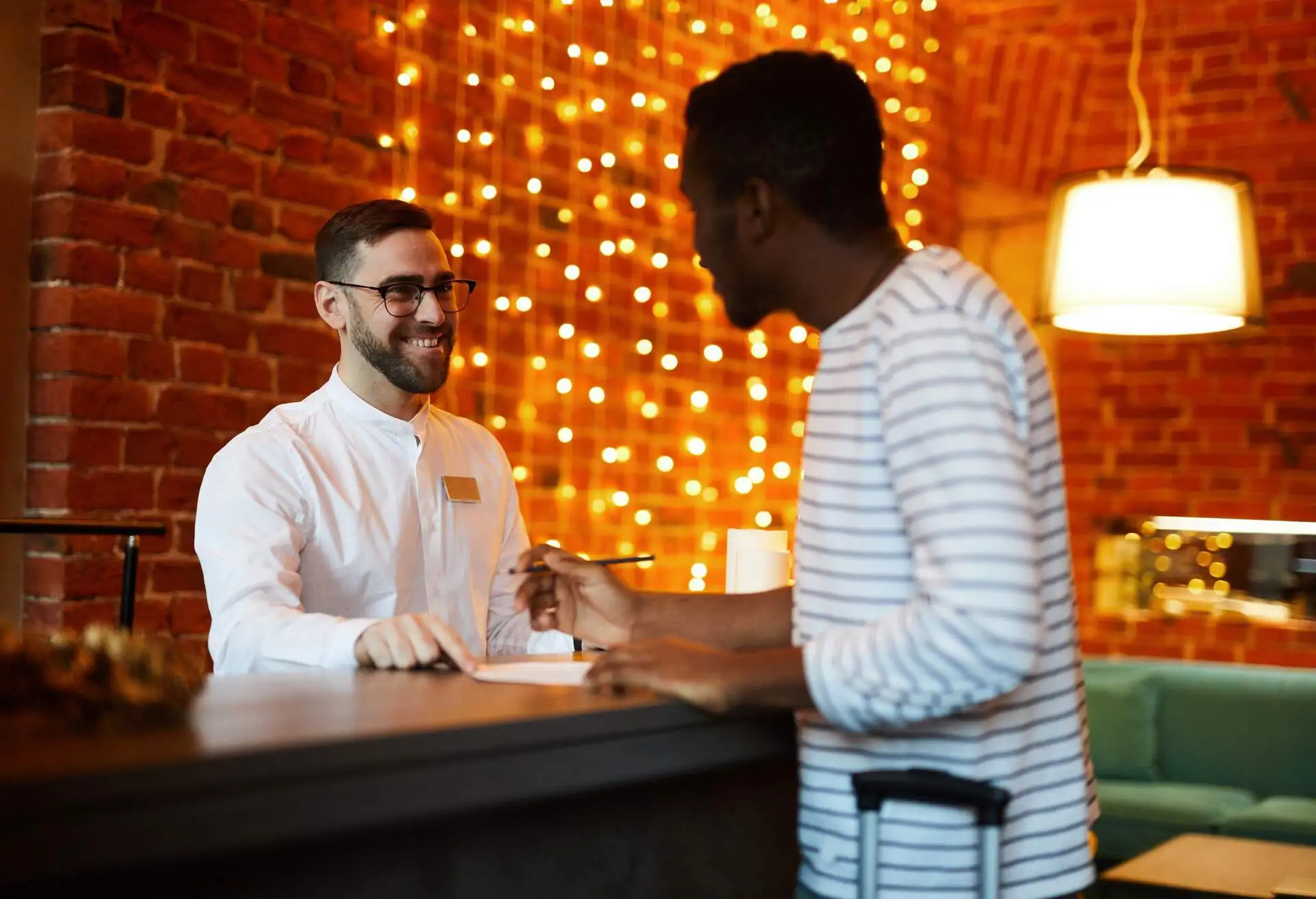It’s no accident that most good hotels feature one or more on-site restaurants. From enhancing the brand value of the hotel to contributing additional revenue, hotel restaurants can be great for business.
But running hotel restaurants isn’t quite the same as managing stand-alone restaurants. There are a few additional restaurant management duties that come into play when overseeing restaurants in hotels.
Here’s some advice about how to run a hotel restaurant:
Quick Links
Why is it important to have a restaurant in a hotel?
How is a hotel restaurant floor plan different?
Attracting quality hotel restaurant staff
How to train staff for a hotel restaurant
Prioritising customer service in a hotel restaurant
How to choose a hotel restaurant management system
How to plan for room service
How to send more guests to the hotel restaurant
Why is it important to have a restaurant in a hotel?
A well-reviewed hotel restaurant can be a major attraction for guests. On-site dining adds convenience for hotel guests, and an acclaimed hotel restaurant can boost the profile of the hotel.
Hotel restaurants also often provide room service or other in-room dining experiences to guests, which can increase spend per guest.
And a hotel restaurant that attracts diners not staying at the hotel can contribute additional revenue to the overall business.
How is a hotel restaurant floor plan different?
Floor plan considerations for restaurants in hotels can be quite different than for stand-alone restaurants. While stand-alone restaurants may focus on maximising dining space, hotel restaurants may be called on to fulfill several functions.
For example, an expanded bar area with a bar menu may be needed to cater for casual diners in hotel restaurants. A fine-dining area for night-time use may also need to be easily transformed into a bright breakfast and lunch bistro.
If the hotel is family friendly, private rooms for kids’ club dining events may be necessary, and the restaurant may also be required to provide poolside service, in-room dining, and function catering.
To meet those requirements, hotel kitchens are often set up with multiple service areas, speciality stations, or room-service kitchens in addition to the main kitchen.

Attracting quality hotel restaurant staff
Attracting quality staff members is often a challenge for many restaurants. But hotel restaurants are well placed to solve this problem. In employment ads, consider promoting the benefits that come with joining not only a hotel restaurant, but also the wider hotel group.
This might include opportunities for restaurant staff to expand their careers into hotel management positions, and the chance to transfer to more locations within the hotel group.
In other words, working at a hotel restaurant is not an ordinary restaurant job. Rather, it’s an entry point to a hotel management career that could take them around the world.
How to train staff for a hotel restaurant
Hotel restaurants that are part of a wider hotel group often have access to more training resources than a stand-alone restaurant.
Some large hotel groups have their own training programs for hospitality staff, while others may consider setting up informal exchange programs.
That might include calling in experienced front of house or kitchen staff from other restaurants in the hotel group to run on-the-job training. Or there may be opportunities to send new staff on training tours of other restaurants in the group.
Prioritising customer service in a hotel restaurant
Guests who are loyal to a particular hotel group may be well versed in the brand’s customer service standards, and any deviation from these standards could be quite obvious to them.
They might also dine in any given hotel restaurant more than once during a single stay, and likely expect to experience consistent customer service standards throughout their stay.
Personalisation is key here, and customer data is the fuel restaurant staff need to create warm, friendly and consistent customer experiences.
OpenTable helps restaurant hotels deliver personalised guest experiences with a comprehensive view of guests’ preferences, notes and visit history — all available at a glance. It’s like a cheat sheet restaurant staff can use to keep building guest relationships across multiple visits and locations.
How to choose a hotel restaurant management system
A restaurant management system is the central nervous system of any restaurant. From bookings and table management to rostering and billing, just about every aspect of restaurant operations is controlled via a restaurant management system.
Choosing the right restaurant management system is even more critical for hotel restaurants. That’s because there’s typically more moving parts to manage. Bookings come in from the hotel’s front desk and guest rooms in addition to all the usual channels . Then there’s room service orders to contend with on top of the busy dining room. And there may even be function-room catering and special events to consider.
That’s why integration is so important. A hotel restaurant’s management system likely needs to connect with multiple other software platforms that drive the hotel’s wider operations.
OpenTable makes it easy to connect third-party bookings, point-of-sale (POS), marketing, customer loyalty, and payments platforms to our single do-it-all restaurant management system. And it can all be managed remotely via the mobile Owner app.

How to plan for room service
Hotel restaurants may offer a dedicated room service menu, and could be required to provide room service on extended operating hours. This requires careful planning and management.
Room service menus should be designed to cater for different tastes across breakfast, lunch, dinner, and late-night service periods, with a focus on fast preparation and easy transport.
Time is always of the essence, so clear communication between the front desk, kitchen and room service staff is vital. This should happen through the hotel’s management platform that is integrated with a restaurant management system to keep the hotel restaurant up to speed.
How to send more guests to the hotel restaurant
The most successful hotel restaurants don’t rely only on the hotel’s guests alone. Rather, a comprehensive marketing plan is required to send as many diners to the hotel restaurant as possible. It aims to develop the restaurant’s brand identity and propose ways to connect with the target demographic.
Building a hotel restaurant’s brand identity is an effective way to help it stand out. It’s like a shortcut that communicates to potential diners not only what goes on the plate, but also the overall guest experience they will have.
But that doesn’t happen by accident. OpenTable’s industry-leading marketing tools are designed to help hotel restaurants bring in more guests via our 24/7 online booking portal and global network of millions of diners.
With the right management, hotel restaurants can be highly successful. They can generate strong revenue through serving the hotel’s guests with eat-in and in-room dining, and leverage the hotel’s reputation to bring in non-guest diners.
However, to make this work, hotel restaurants need well-trained staff with access to personalised guest data, and a restaurant management system that integrates with other hotel management platforms. That’s the formula for smooth sailing.




